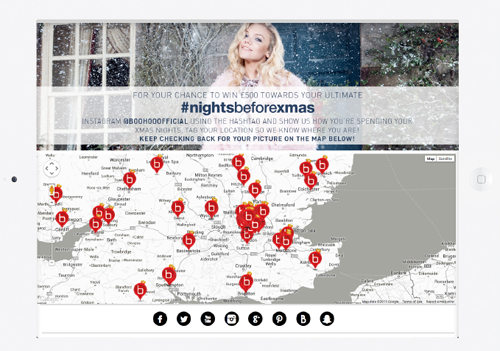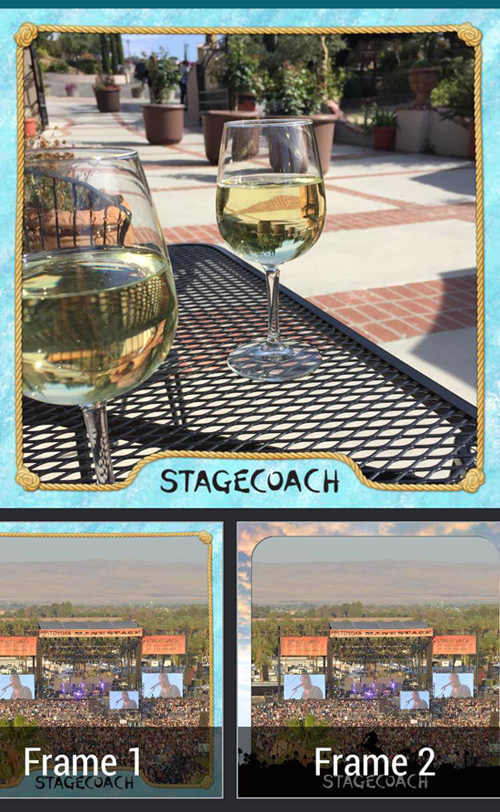Organic Reach: 3 Social Sharing Strategies

New Facebook algorithms will once again affect brands' organic reach on the network, requiring them to really consider advertising as a way to get their businesses and its content in front of new and existing customers.
As covered in Website Magazine's July issue, there are still opportunities for companies to reach users without paying to play, but they require a little bit of creativity such as using branded photos and encouraging tagging and peer-to-peer sharing. More on this topic can be found in last month's Social Media Mavens article, but here are the three strategies in action:
Peer-to-Peer Sharing
User-generated content (UGC) is far and away the most valuable resource a brand has at their disposal, as this kind of content is seen as more trustworthy than anything a brand can create. Further, with Facebook's algorithm updates, not only will users see less of what their friends have liked and commented on, but they will also see more posts directly from their friends (and less from Pages).
These changes are intended to improve the user experience on the network (according to the network itself), but it's not good news for brands who rely on the traffic and exposure that their organic posts (ones they don't pay to promote) generate. That said, getting customers/users/visitors to share a company's content with their friends and family can be touch, but it can also be a digital goldmine.
There are a few ways to do this. For starters, all companies with content to share (e.g. blogs, products, etc.) should include sharing widgets (ShareThis and AddThis are good options) - the easiest way to encourage peer-to-peer sharing.

Secondly, contests are an effective way to increase the amount of user-generated content a brand receives. Using Offerpop, for example, boohoo (a retailer) created a customized content gallery showcasing their fans' #NightBeforeXmas content in an interactive heat map (see image).
All users had to do was Instagram the retailer using the hashtag and show @boohooofficial where they're spending Christmas nights and tag their location so they can be added to the map - creating a fun, engaging way to interact with the brand. What's more, those who participated introduced or re-introduced boohoo to their friends and family on Instagram by sharing the photos, including the Instagram handle and the branded hashtag.

Like the boohoo contest, hashtag marketing is also a proven way to increase UGC. Check out, "5 Steps to Better Hashtag Marketing" for further reading.
Branded Photos
Clearly companies who are able to encourage their customers to share photos of them using their products or engaging with the brands in a meaningful way, have the upper hand when it comes to reaching social media users, because those brand advocates are doing most of the work. There is a way, however, for this type of content to be improved, and this is where branded photos come into play.
For example, a person sharing a photo of themselves and their friends at a concert could promote the venue, artist and concert if those details are included, but most of the time these photos are simply selfies, which lack any sort of brand details. This is why companies want to create an easy way for their customers/patrons to share a branded photo. Stagecoach, a popular music festival in California, created an app which adds a border (of the user's choice) around the user's photo with the festival name. Then, the app's social media integration makes it easy to share the branded photo.

Tagging
The more people tagged in a photo, the greater the organic reach, especially for photos marked "public" with no viewing restrictions. Brands can encourage tagging in a few ways, such as by simply asking. A car brand, for example, could post a picture of their most popular vehicle with the caption, "Tag yourself if you love your Honda Accord!"
The more advantageous a brand makes it to the user, however, the better. Going back to the Stagecoach example, the festival organizers share photos from the various concerts and meet and greets like fans getting introduced to Tim McGraw. Fans in the photos happily tag themselves in the photos so that their friends see their photo opportunity. To take this a step further, Stagecoach has included its logo in the lower right-hand corner, which doesn't compromise the quality of the photo, but ensures its brand is represented as the photos get shared across the various social networks.

Organic Hope
Marketers may be getting increasingly frustrated at the lack of organic reach options on Facebook, but it's still the most relied on social network by businesses (particularly small and medium-sized ones). To enjoy organic reach on the network today, it just requires a little creativity by the marketer and his or her team.

Subscribe to Our Newsletter!
Latest in Social Media










